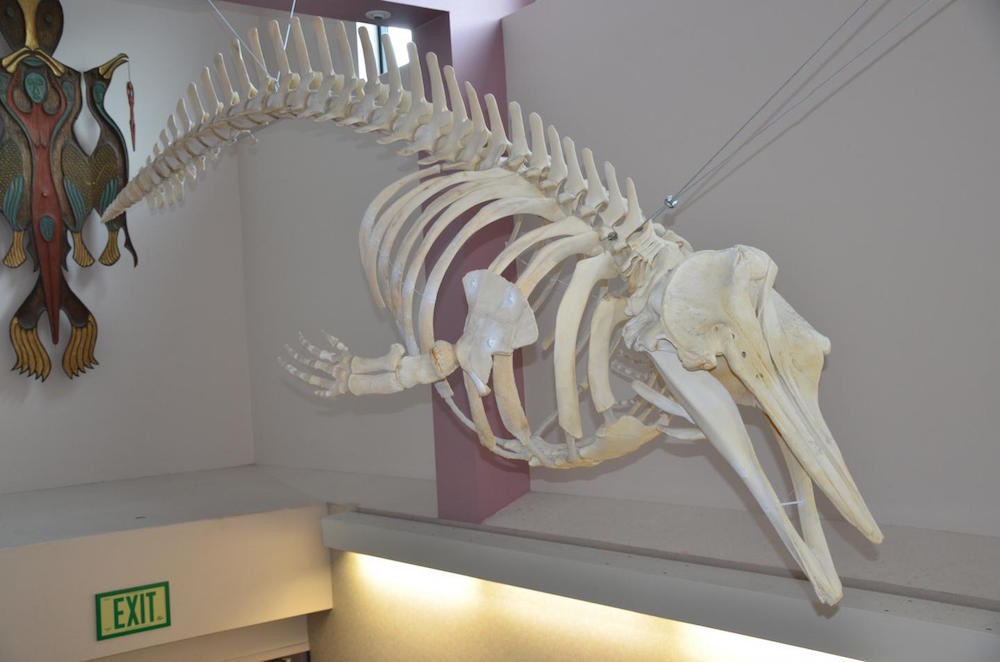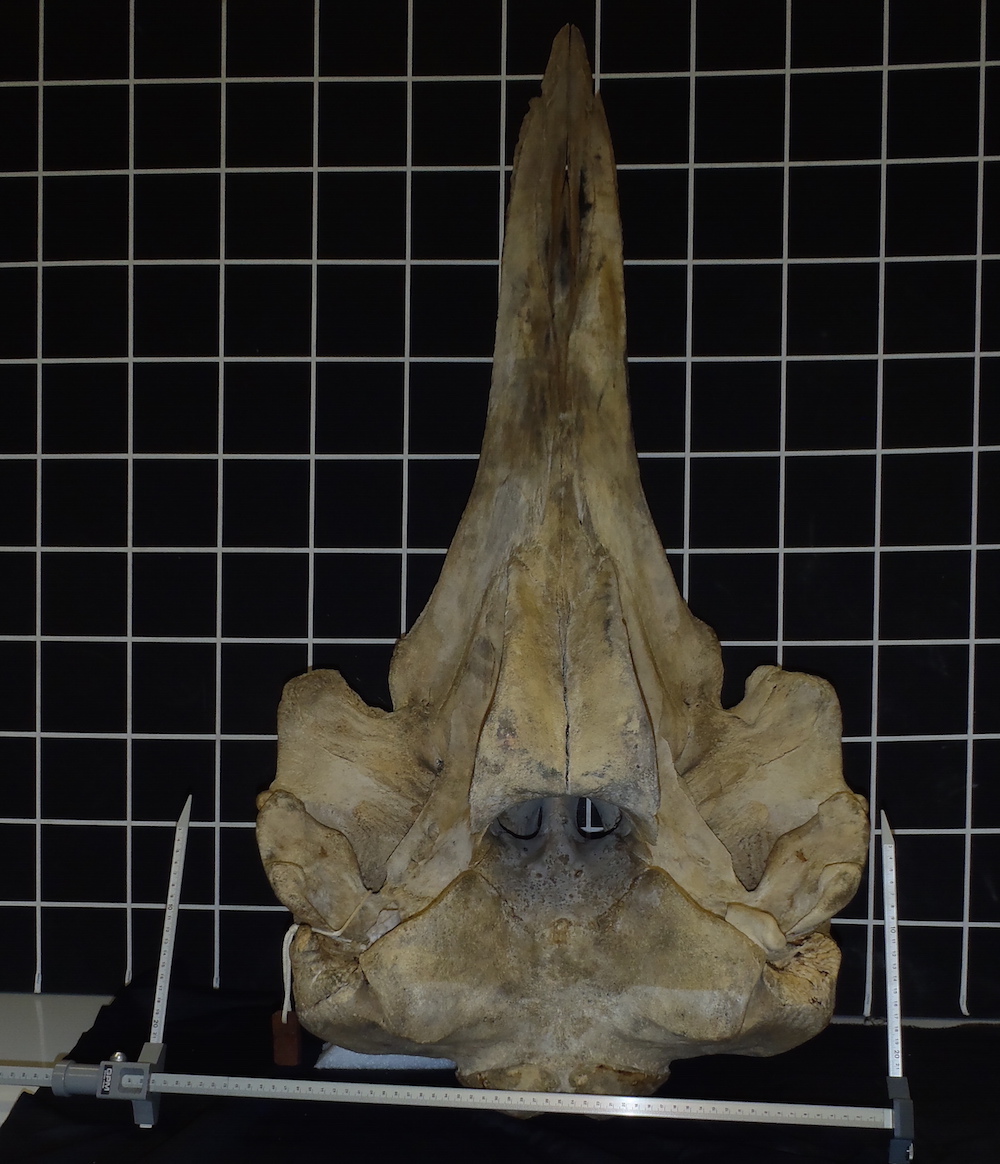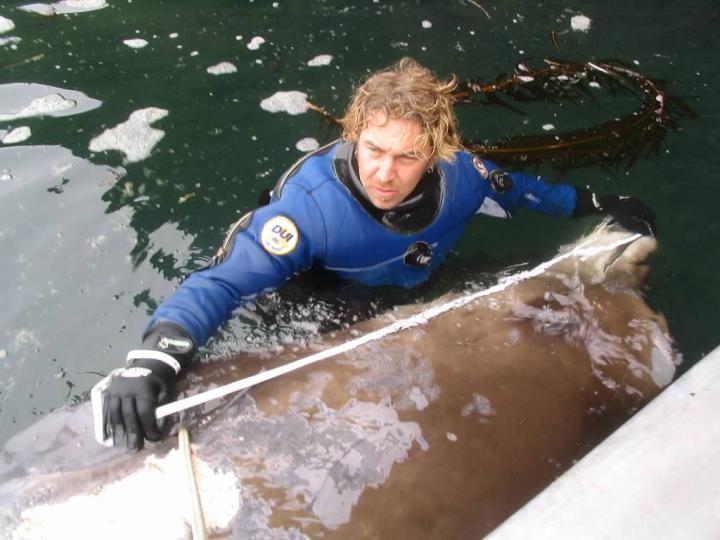Rare Black Whale Discovered in Pacific

The discovery of a new species of rare and elusive whale in the North Pacific shows how little humans know about the deep and vast ocean, researchers say.
The 24-foot-long (7 meters) beaked whale is full of mystery, said the study's lead researcher, Phillip Morin, a molecular geneticist at Southwest Fisheries Science Center in La Jolla, California.
"We've only ever seen it from dead animals that have washed up on the beach," Morin told Live Science. "We only get bits and pieces of evidence from each of these animals." [Whale Album: Giants of the Deep]

The still-unnamed whale lives in the cold Pacific waters spanning from northern Japan to the Aleutian Islands in Alaska, the researchers said.
The whale came to the scientists' attention after they read a 2013 study describing three mysterious dead whales that had washed ashore in northern Japan. The specimens were genetically distinct from the common Baird beaked whale (Berardius bairdii), which lives in the North Pacific, but the study researchers weren't sure whether it was a completely new species.
The whales certainly looked different. Baird whales have slate-gray-hued bodies and are fairly large, measuring up to 40 feet (12 m) long, Morin said. In contrast, the newfound whale was about two-thirds that size and black, prompting Japanese whalers to call it karasu, the Japanese word for raven.
Genetic plunge
To investigate, Morin and his colleagues scoured museum collections for specimens of beaked whales. A DNA analysis of 178 beaked whales from the Pacific Rim (a coastal region circling the Pacific) yielded eight of the mystery whales, he said.
Sign up for the Live Science daily newsletter now
Get the world’s most fascinating discoveries delivered straight to your inbox.

The team also analyzed the tissue of two black whales that had washed ashore — one in the Alaskan Aleutian Islands, whose skeleton now hangs in Unalaska High School in Alaska, and another found on the Pribilof Islands in the Bering Sea. Interestingly, many scientists thought that these black whales were either juvenile or dwarf Baird whales, but the specimen from the Pribilof Islands had teeth that were worn and yellow in color, indicating that it was an adult, Morin said.
Genetic tests of these two whales verified that the black whale was a previously unidentified species, Morin said. He added that the black whale has a "slightly different shape of head and placement of the dorsal fin" than the Baird whales do, but scientists will need to study a live animal, or at least find a well-preserved dead one, before commenting on its anatomy, he said.
Those beached whales also had cookie-cutter-like bites on their bodies that looked like shark bites, suggesting that they migrate to tropical waters, Morin said.
Whale cousins
The DNA analysis revealed that the new species belongs to the same genus as the Baird whale but that it's actually more closely related to another whale within that genus, the Arnoux's beaked whale (Berardius arnuxii), which lives in the South Pacific. [High-Res Satellites Help Track Whale Populations]
More research is needed, but Morin hypothesized that the whales had a common ancestor before they split into two species — B. arnuxii in the South Pacific and the newly identified species in the north. B. bairdii likely evolved later, but more evidence is needed to say for sure, Morin said.

Now that researchers are aware of the newfound species, they can work to protect it.
"The implication of a new species of beaked whale is that we need to reconsider management of both species to be sure they're sufficiently protected, considering how rare the new one appears to be," study co-author Erich Hoyt, a research fellow with Whale and Dolphin Conservation in the United Kingdom, said in a statement.
The study was published online July 26 in the journal Marine Mammal Science.
Original article on Live Science.

Laura is the archaeology and Life's Little Mysteries editor at Live Science. She also reports on general science, including paleontology. Her work has appeared in The New York Times, Scholastic, Popular Science and Spectrum, a site on autism research. She has won multiple awards from the Society of Professional Journalists and the Washington Newspaper Publishers Association for her reporting at a weekly newspaper near Seattle. Laura holds a bachelor's degree in English literature and psychology from Washington University in St. Louis and a master's degree in science writing from NYU.









